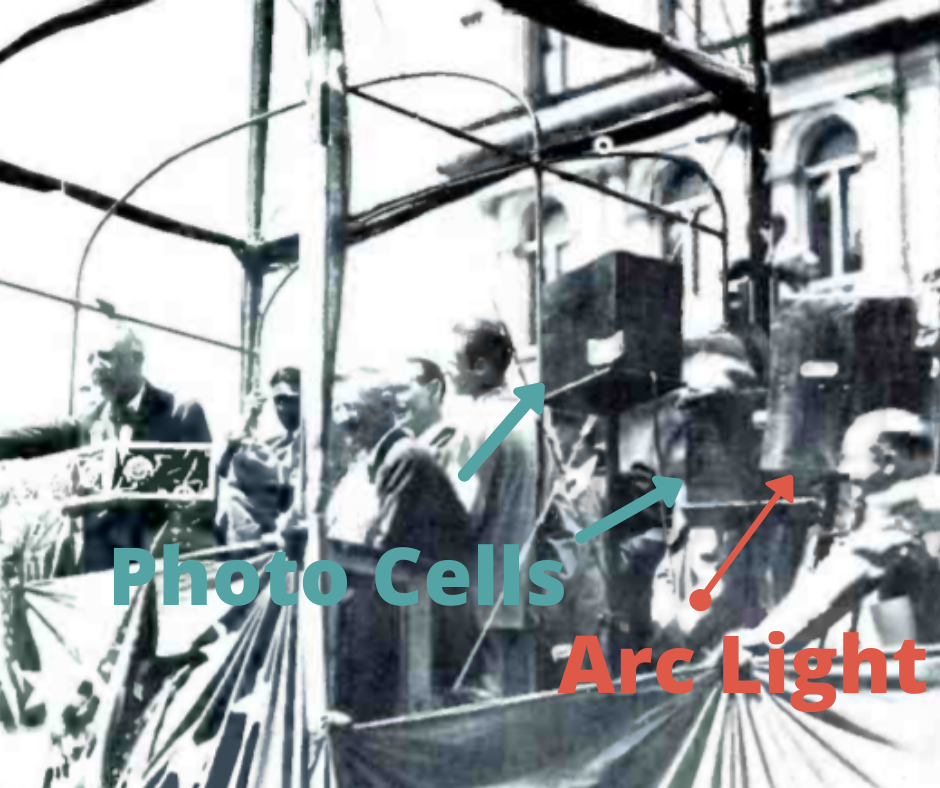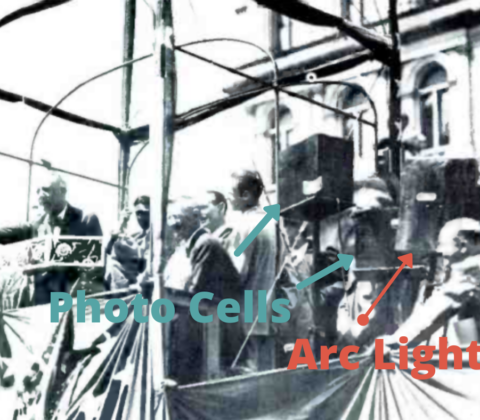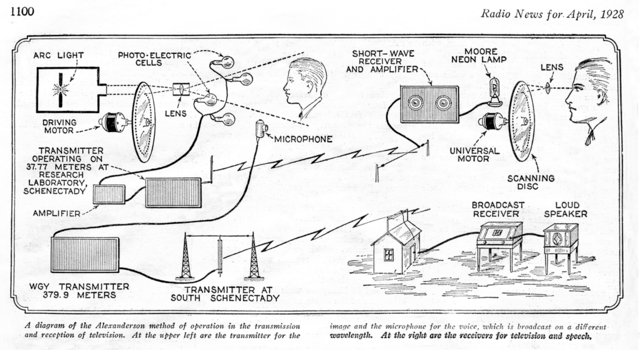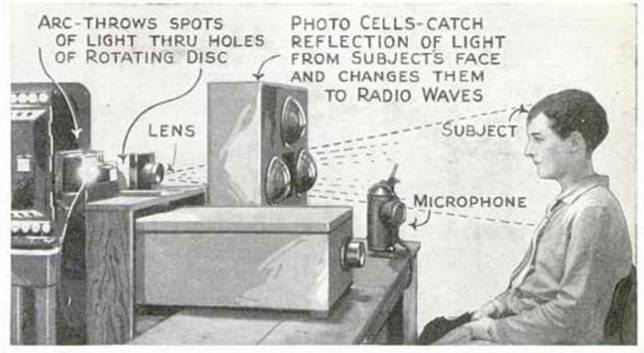

SPECIAL!! EARLY TELEVISION SURPRISES, Part 2 of 3
Surprise #1…THIS IS A PREVIOUSLY UNKNOWN PHOTO OF THE WORLD’S FIRST TELEVISION REMOTE BROADCAST, three years before John Logie Baird’s 1931 Epson Derby remote in England.
Surprise #2….This was also the first live television news event. Or, was supposed to be. It seems that all went well in rehearsal, but when Gov. Smith came to the podium, all the film cameras there turned on their bright lights, which washed out the ability of the photo cells to see the image.
Surprise #3…The photo was taken on August 22, 1928, as WGY transmitted Gov. Al Smith’s speech accepting his nomination for the U. S. Presidency. The event took place in Albany, New York, and 24-line pictures were sent back to Schenectady, OVER A TELEPHONE WIRE.
Using a telephone line for TV transmission was a relatively new event. Jenkins did a 5 mile “Shadow Graph” transmission in 1923, but it was late 1927 before Baird did a 435 mile transmission in the UK, and AT&T did a New York-Washington linkup.
This rare image is the one that started the idea for these surprise stories. I found it a about six weeks ago in one of the anniversary editions of the Broadcasting Magazine Yearbook (pg.4).
http://www.americanradiohistory.com/Archive-BC/BC-1981-50th/BC-1981-50-Years-of-Broadcasting.pdf
The three black boxes on stage caught my eye first, then the caption, which said, “These General Electric television cameras, from WGY Schenectady were said to be involved in the first TV remote when they covered New York Gov. Al Smith, the 1928 Democratic Presidential nominee, accepting the nomination in Albany.”
I was confused by the black boxes in the photo, but began to investigate. This is where yesterday’s surprises in Part 1 came into play. The two smaller boxes here are the photo electric pick up cells, and the big box in the center…the one we think of as a camera, is actually projecting a strong light through a scanning disc inside the big box.
Put another way, it is a “flying spot scanner”. In much the same way electronic television tubes scan the subject – delivered by the camera lens to the target screen, scanned from left to right, and top to bottom – the mechanical system’s “camera” projected a spot of light that scanned the subject the same way.
The images of the subject are made by the photo electric photo cells which are seen here as the two smaller black boxes.
Surprise #4…At the link is an incredible 20 second piece of film from WGY in 1928 that will explain how this works. WATCH CLOSELY and repeat.
First, notice…the octagonal object on the left is the “monitor”, a mechanical televisor unit with a 3 inch screen. The smaller black boxes with the big glass objects are not lights, but the photo electric “eyes” that make the picture. The big black box with a lens on the front (that looks like a camera) is the light projector and the lens focuses the 1000 watt light inside, projected through a spinning disk.
Watch how the tech moves the small photo electric box like a camera…which is is.
This is part of the first ever dramatic television broadcast called “The Queen’s Messenger” and what you are seeing in this clip is how they shot a close up scene that concentrated on the actors hands, and what they had in them.
There were only four actors, these two hand actors and two face actors…a female Russian spy and a male British diplomatic courier. Only close ups were possible and there were three projectors in the room with six photo electric cell boxes. One projector was for the female face actor, one for the male face actor and one for the hand actors.
By the way, this is a brightly lit reenactment for the film camera, because the studio had to be twilight dark in order for the not so sensitive photo electric cells to capture the 24 lines of light projected onto the subjects.
Also shown here is an April 1928 diagram of the GE mechanical television process that includes the broadcast and reception method. Notice that two radio transmitters were used in these experimental broadcasts. The visual image was broadcast on GE’s experimental shortwave station W2XB operating on 37.33 meters (7.7 MHz) and the sound was broadcast over their radio station WGY, operating on 379.9 meters (790 KHz).
The last image is a simplified version of the broadcast apparatus from an April 1928 Mechanic’s Illustrated.
Tomorrow, how mechanical television morphed into the electronic version, and more surprises! Please share this with your friends, so they can be surprised too. -Bobby Ellerbee


One interesting revelation: John Logie Baird’s “high-definition” 240-line mechanical system was pretty much identical to the system used in the German intermediate-film remote trucks at the 1936 Berlin Olympics. There was something like a 53-second delay between filming and scanning the wet emulsion with a flying-spot scanner.
The film camera was necessarily absolutely stationary, and there was only (obviously) one camera. Performers hated the Baird system with every fiber of their being; the announcers liked one aspect of it — being able to run into the control room and see how they did.
The Baird receiver in 1936 used a cathode-ray tube, not a spinning disk and neon lamp.
http://www.thevalvepage.com/tvyears/1936/bairdad.jpg
This is absolutely fascinating — a 1976 BBC documentary marking the 40th anniversary of the beginning of regular British television broadcasting in 1936.
It begins with Baird’s early experiments with mechanical television and takes us through the BBC’s testing of “hi-def” all-electronic and mechanical systems, with the eventual rejection of the Baird system and the inauguration of regular service via the 405-line Marconi-EMI system.
https://youtu.be/dEqYO2j4Cv4
I remember an article, I think in Popular Science on a similar photo cell system for color TV. Camera like light sources and hanging photo cell pickups. The studio work lights were synchronized to be on when the scanner lights were off. My well have been a GE system.
And I’m interested that the mike drawn in the Mechanics Illustrated image is a GE/RCA 3A condenser.